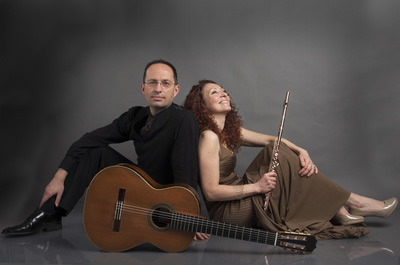The Raleigh Symphony Orchestra’s concert on Sunday evening, February 12, 2006, was a grand affair, highlighted by an emotionally satisfying performance of the Bruch Violin Concerto No. 1 by violinist Yang Xi. The program was given in Meredith College’s Jones Auditorium.
Xi, who serves as the assistant concertmaster for the RSO, has firmly established himself in the area as both teacher and performer. Tall and distinguished-looking, Xi does not have a showy, extroverted manner. Instead he quietly goes about his music making with utter confidence, playing in a recognizably romantic fashion that emphasizes character over mechanical perfection and emotional interpretation over flashy speed (a likely influence from his mentor, Isaac Stern).
The opening violin solo was slower than some players take it, but Xi’s rich intensity and sweet tone made it work. Yet Xi could let his fingers fly, too, as in the sprightly cadenza of the first movement. Bruch’s heartrending melody in the adagio second movement was given gripping emotional punch in Xi’s deeply felt, introspective interpretation. He then created an impressive contrast with the third movement’s sharp attacks and bold melodies. Overall, Xi’s warmth and strong connection to the music made this a most satisfying performance.
Music Director Alan Neilson and the orchestra were equal partners in the success. The strings have never sounded better, supplying an impressive richness of tone, especially in the lower lines, the cellos sonorous and woody. In the major orchestral sections of the first movement, the violins had a marvelous shimmer. Neilson secured exciting tension and thrusting tempos from his players, with excellent attention to dynamics.
Xi’s fan base turned out in force for this performance, their cheers, wild applause and armloads of giant bouquets just a splashier indication of the entire audience’s reaction. Xi favored them with an encore, the extremely difficult Paganini Caprice No. 24. Virtually no one plays this showpiece perfectly, so the few missed notes were totally acceptable, especially with Xi’s exhibition of all his violin tricks and stunts. Once again, his performance was not unduly showy but merely a confident demonstration of his estimable talents.
On its own, the orchestra proved to be in fine fettle for Mendelssohn’s Third Symphony (“Scottish”). The strings were precise and cohesive, playing with exhilarating accents and dramatic dynamic changes. They moved easily from the pizzicatos of the upbeat second movement to forceful bowing of the broad melody of the third. The woodwinds burbled jauntily throughout, but the brass often seemed blunt and heavy-handed in the big climaxes. Nevertheless, they were more successful than in the opening work, the Overture to Borodin’s Prince Igor, in which they seemed especially tentative and blatty.
Neilson again set taut tempos for all the movements, finding a great balance between those interpretations that lean toward too fleeting or too heavy approaches to Mendelssohn. His conducting was deceptively simple, with rarely a gesture or signal for dynamics or entrances, yet the obviously well-rehearsed players knew exactly where every change and pause occurred.
The main point to be taken from this fine performance is that, with tickets at less than half the cost for orchestras such as the NC Symphony, the RSO provides affordable access to the standard repertory, which is well-played in straightforward interpretations. Anyone who has never attended an RSO concert, fearing amateur or second-rate performances, should have no hesitation in buying a ticket. An enjoyable experience is guaranteed.











